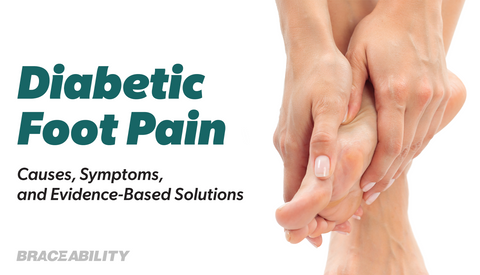Snow Shoveling Tips That Will Make the Job Easier (and Safer)
I live in Iowa, a lovely state filled with rolling fields of corn and beans (not potatoes) where we see all extremes of weather, from hot sunny days featuring triple-digit temperatures and full humidity to snowstorms bringing feet of snow and temperatures well under the 0-degree mark.
We’re no stranger to snow shoveling or the injuries that come along with them. In the midst of winter, it seems only appropriate that we consider how to make snow shoveling as “easy” and safe as possible.

Most Common Snow Shoveling Injuries
Back pain from shoveling snow is far and away the most common complaint, as the arduous task of moving snow can really strain the soft tissues of the region. In fact, roughly a third of doctor visits for shoveling injuries involve the lower back.
While lower back pain from shoveling snow is one of the most common complaints, there are certainly other areas of the body that are overexerted when you are moving snow. Many also complain of shoulder, wrist or forearm pain after shoveling.
The heavy work of scooping and throwing snow can work these muscles harder than they typically are, especially if your technique isn’t great or your shovel isn’t a good fit (more on that shortly).
Lacerations from a shovel whack to the head are a surprisingly common reason for shoveling-related doctor visits. While this might sound funny, it’s no laughing matter.
And the combination of movement, snow, and ice can leave you with banged up limbs, bum, or feet due to a fall.
And perhaps most seriously, shoveling snow can be hard on your heart. If you suspect a problem with your ticker, especially if you have had heart problems in the past, get to the hospital.
Treating Shoveling Injuries
There are a number of braces that can help in the aftermath of a snow shoveling injury to the lower back, shoulder, wrist, etc. As just a few examples, you might consider the following products that in addition to supporting your sore tissues, also apply compression and heat and/or ice therapy that can bring down painful inflammation:
| Low-back | Heat & Ice Therapy Lower Back Muscle Pain Wrap |
| Wrist | Wrist Support Brace for Exercise |
| Shoulder | Shoulder Brace with 2 Hot/Cold Gel-Packs |
But obviously, it’s best to prevent the injury from happening in the first place. Following are some safety tips on how to shovel snow properly.
Snow Shoveling Safety Tips
Preparation goes a long way for warding off injury. Following are some tips for making the task safer and easier:
Preparation Is Key
Things you do before digging into the white stuff are paramount when it comes to preventing back pain (and other injuries) after shoveling.
Make sure you are hydrated before and while shoveling snow.
Shoveling is exercise. You’ll burn an average of nearly 300 calories when shoveling snow, and that figure goes up the wetter and heavier the white stuff.
As with any exercise, you’ll feel and perform better if you stay hydrated.
Bundle Up
Besides keeping you comfortable and warding off frostbite, the extra layers are important for keeping your muscles and other tissues loose. If your body is cold and tense, you’re more likely to strain a muscle. Multiple, breathable layers are your best bet for staying dry and comfortable.
Wear Good Shoes
It may be tempting to just slip on your loafers to quickly clear a walkway after a light dusting of snow. But such shoes may not have good tread or insulation, leaving you vulnerable to a tumble or even frostbite. Taking the time to put on a good pair of boots before shoveling can help you avoid a trip to the doctor.
Warm Up Your Muscles
Again, shoveling snow is tough work. You should warm up your arms, shoulders, back, and legs before getting started, just as you would for any other workout.Think about What You Eat and Drink
Again, since this an exercise with the added hazards of slippery surfaces, you should not eat a heavy meal or drink alcohol before shoveling snow.
Take Things Slow
Allow enough time to complete the task at hand. If you’re rushing along, overexerting yourself in an attempt to move too much snow too quickly, you up your odds of falling or otherwise injuring your muscles. Keeping up with a storm as the snow piles up can also lessen the strain on the body and mind. It is far less daunting to push a few inches of snow to the side than to shovel a foot of packed snow.
Keep a Phone Nearby
It’s also a good idea to prepare for the worst. If something does go wrong, you’ll want a phone nearby so you can call for help.
Get Shoveling (Using Proper Shoveling Techniques)

When it comes to proper snow shoveling techniques, everything you do should focus on using as little effort as possible. Doing so can dramatically lower your risk of wrist, shoulder or back pain after shoveling snow.
Take the Path of Least Resistance
Your plan of attack should focus on moving snow once and for the shortest distance possible. When it comes to clearing a driveway, that means clearing a strip down the middle and then pushing snow toward the outer edge on either side of that strip.
Note I said PUSH the snow. Pushing snow uses a lot less effort than scooping, moving and tossing the snow and should therefore be your go-to choice whenever possible.
How to Shovel Snow Properly

I’m beginning to sound like a broken record, but again, you should push snow straight in front of you to a snowbank rather than lifting and tossing the powder whenever possible. If that’s not an option, making sure you’re using good form can help prevent back pain after shoveling.
As with other types of lifting, you should rely on your arms and legs to do the lifting rather than the back. To do so, bend the knees and hinge at the hips, taking care to keep your back straight. Wearing an industrial-style work belt can help to that end and make the task a bit easier.
You should square your body to the snow you plan on lifting and grip the shovel at two spots—the handle and farther down the shaft, close to the blade.
To actually transfer the snow, pivot and walk to the place you will deposit the snow, keeping the load close to your body as you move.
You should NOT toss the snow toward the snow bank as that would put unnecessary strain on your upper body. Doing so is basically asking for back pain all winter.
Other steps for limiting your risk of wrist, back or shoulder pain after shoveling snow include lifting small amounts of snow at a time and taking regular breaks to give your muscles a break.
If you overdo it, your form will likely get sloppy as your muscles tire, making you all the more vulnerable to a back injury from shoveling snow.
How to Choose a Snow Shovel
If you take a stroll through the shovel section at a hardware store, you’ll quickly see that there are a ton of options to choose from—so much so that making a choice can be daunting. Following are some things you should consider when making your choice.
Determine What Blade Material You Need
For starters, where do you plan on using the shovel? While a shovel with a metal blade may be great for clearing concrete sidewalks and driveways, it can also ding a wooden porch or brick pavers.
Generally speaking, metal blades are good for ice-covered snow and heavier loads since they are strong and durable.
But plastic blades are lightweight, flexible and easier to maneuver. This style of shovel is easier on the back. Another plus is that snow will not stick to plastic, improving its efficiency.  That said, it’s not great for ice or wet, heavy snow and can be damaged by rocks, screws, etc.
That said, it’s not great for ice or wet, heavy snow and can be damaged by rocks, screws, etc.
For the best of both worlds, you might turn to a combination product that features a plastic blade with a metal wear strip.
Consider Your Strength and Height
You should also consider your strength and height. You want a shovel that’s durable, but not too heavy. Shovels come with a wide range of scoop capacity, and an oversized one that you cannot handle well will make shoveling far more of a chore than it needs to be.
Similarly, you should pick a shovel that is a good length for you. As a 5’-tall woman, I have a hard time handling a long shovel, in part because it’s nearly impossible for me to get the right amount of leverage with a long-shafted shovel.
There are also some ergonomic snow shovels with extra bends in the shaft meant to lessen the strain on the back and improve your leverage.
Pick a Shovel with a Comfortable Handle
The handle should also be comfortable to grip and maneuver. Try out a scooping motion in the store for a better idea of what works for you.
Some shovels come with an ergonomic handle that can be adjusted to a position most comfortable for your hand and wrist. D-shaped handles are also easier to handle for some.
Another consideration when it comes to actually lifting the snow is whether the shovel has a second handle or a slot near the blade so you can grip it with two hands. This makes moving a heavy load of snow easier and diminishes your risk of back or wrist pain from shoveling snow. Some shovels come in a dual handle design, or you can purchase a standalone handle that you can attach to an existing shovel.
Handles come in many different materials, each with their pros and cons. You’ll have to decide what matters most to you.
- Wooden handles:
- Pros: Lightweight, strong, durable
- Cons: Requires some maintenance (e.g., tightening screws, oiling)
- Fiberglass handles:
- Pros: Most durable option, won’t rust or bend
- Cons: The durable material is also heavier
- Plastic handles:
- Pros: Lightweight. If weight is your biggest concern, this is your best bet.
- Cons: Constant exposure to sun and moisture can leave it vulnerable to cracking, breaking
- Metal (often aluminum) handles:
- Pros: Lightweight
- Cons: Vulnerable to bending under pressure; can rust if not dried off
Consider Buying a Few Snow Shovels
What kind of snow shovel is best will also depend on the task at hand.
One of the best snow shovels for a bad back is a plough-style kind of shovel for pushing snow, but there are times when this ergonomic shovel style simply won’t work, such as for heavy or ice-crusted snow. On the flip side, it seems a bit ridiculous to use your heavy-duty, round-nose metal shovel to push a light dusting of snow off a driveway when a broom would suffice.
Especially if you live in an area that receives snow for months on end, you may need a variety of snow removing tools at your disposal.










